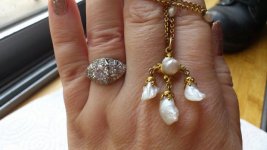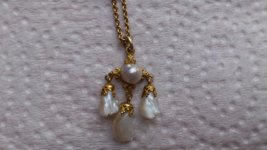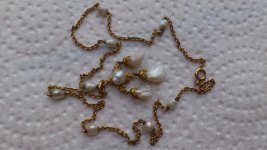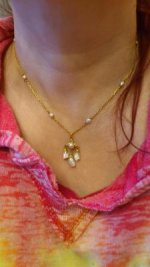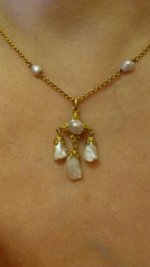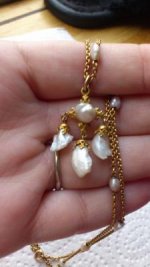Hmmm, as to the periods...... yes, I knew about King George in THIS century of course (I'm Canadian too remember) but I've never heard that time period referred to as anything OTHER than Edwardian (the post Victorian era). By the way, I always found it SO confusing how they take another name when they become King (George's real name being Albert right? but Edward's name WAS Edward? WTF? I'd watch these movies about the Royal family with my mom and see the Queen mum talking with someone named Albert and be like "Huh? Who's that? Is that the one that gave us the throne?" "No, that's the King" "But I thought the king was named George" "He is" "But I thought that was her HUSBAND" "It IS! WATCH THE MOVIE!"
- Jodie -
Hope you don't mind my replying late, Jodie, but I've only just joined the forum.
I'm no expert in jewellary, but know a bit about British history, if that helps?
A few Kings have changed their names when they take the throne - George VI was one of them. I'm heard it suggested, too, that Charles intends to be King Edward VI in the fullness of time, but I don't know if that's right. Edward VIII was always called "David" by his family, too!
There was certainly silver-plating in the 19th century, so I imagine there was gold plating, too. If it were an English necklace, it would be properly hallmarked, and more likely to be "ct", as others have said. And 14ct isn't that common a gold standard here, either, although it does exist. More likely to be either 9 ct or 18ct here, I reckon.
"Georgian" usually means from the start of King George I to the end of King William IV - William's reign wasn't long, and it was at the end of all those boring Georges, too. So it's often lumped in with them.
After Edwardian, I think you'd normally hear people talk about "inter-war", meaning 1918 - 1939, and "post-war" for 1945 to date. Roughly, anyway!
It is a lovely necklace. What did your appraiser say about it?
Amanda

